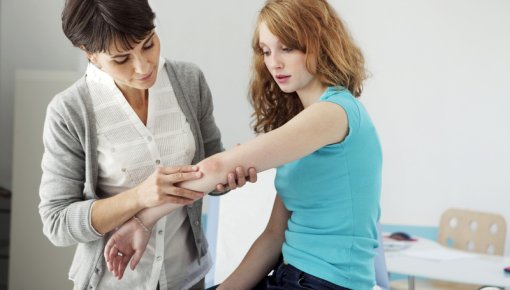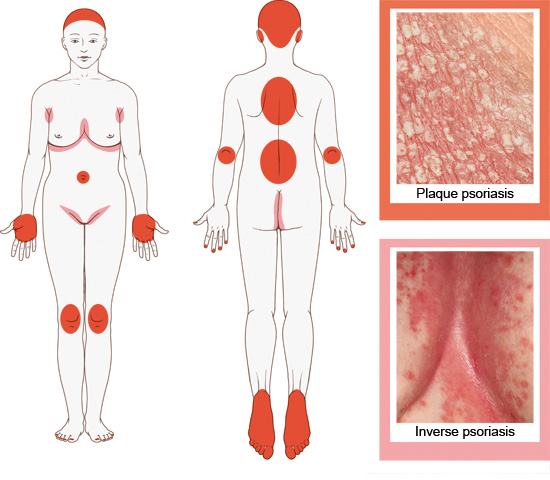Armstrong AW, Read C. Pathophysiology, Clinical Presentation, and Treatment of Psoriasis: A Review. JAMA 2020; 323(19): 1945-1960.
Boehncke WH, Schön MP. Psoriasis. Lancet 2015; 386(9997): 983-994.
Dupire G, Droitcourt C, Hughes C et al. Antistreptococcal interventions for guttate and chronic plaque psoriasis. Cochrane Database Syst Rev 2019; (3): CD011571.
Farahnik B, Sharma D, Alban J, Sivamani RK. Topical Botanical Agents for the Treatment of Psoriasis: A Systematic Review. Am J Clin Dermatol 2017; March 13, 2017.
Farahnik B, Sharma D, Alban J, Sivamani R. Oral (Systemic) Botanical Agents for the Treatment of Psoriasis: A Review. J Altern Complement Med 2017; February 03, 2017.
Ford AR, Siegel M, Bagel J et al. Dietary Recommendations for Adults With Psoriasis or Psoriatic Arthritis From the Medical Board of the National Psoriasis Foundation: A Systematic Review. JAMA Dermatol 2018; 154(8): 934-950.
Griffiths CE, Barker JN. Pathogenesis and clinical features of psoriasis. Lancet 2007; 370(9583): 263-271.
Ko SH, Chi CC, Yeh ML et al. Lifestyle changes for treating psoriasis. Cochrane Database Syst Rev 2019; (7): CD011972.
Lebwohl M. Psoriasis. Lancet 2003; 361(9364): 1197-1204.
Nast A, Amelunxen L, Augustin M et al. Leitlinie zur Therapie der Psoriasis vulgaris (S3-Leitlinie). AWMF-Registernr.: 013-001. Update 2017.
Reich K, Krüger K, Mössner R, Augustin M. Epidemiology and clinical pattern of psoriatic arthritis in Germany: a prospective interdisciplinary epidemiological study of 1511 patients with plaque-type psoriasis. Br J Dermatol 2009; 160(5): 1040-1047.
Upala S, Sanguankeo A. Effect of lifestyle weight loss intervention on disease severity in patients with psoriasis: a systematic review and meta-analysis. Int J Obes 2015; 39(8): 1197-1202.
Weigle N, McBane S. Psoriasis. Am Fam Physician 2013; 87(9): 626-633.
World Health Organization (WHO). Global report on psoriasis. Genf: WHO; 2016.
Yang SJ, Chi CC. Effects of fish oil supplement on psoriasis: a meta-analysis of randomized controlled trials. BMC Altern Med 2019; 19(1): 354.
IQWiG health information is written with the aim of helping people understand the advantages and disadvantages of the main treatment options and health care services.
Because IQWiG is a German institute, some of the information provided here is specific to the German health care system. The suitability of any of the described options in an individual case can be determined by talking to a doctor. informedhealth.org can provide support for talks with doctors and other medical professionals, but cannot replace them. We do not offer individual consultations.
Our information is based on the results of good-quality studies. It is written by a team of health care professionals, scientists and editors, and reviewed by external experts. You can find a detailed description of how our health information is produced and updated in our methods.



